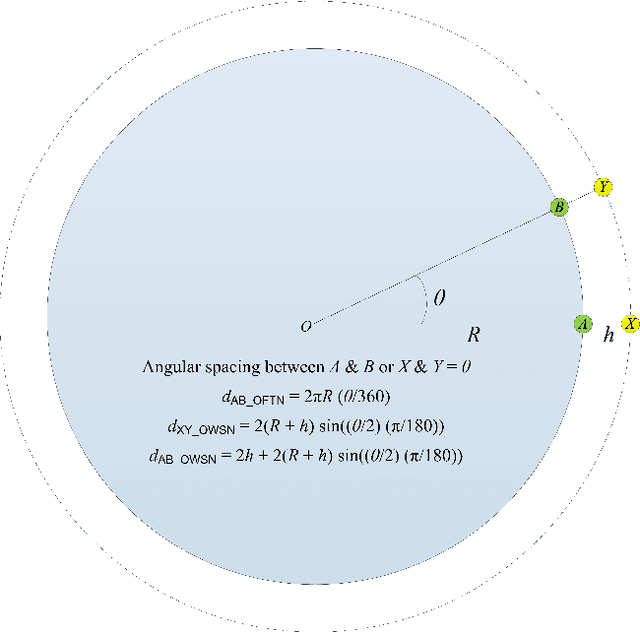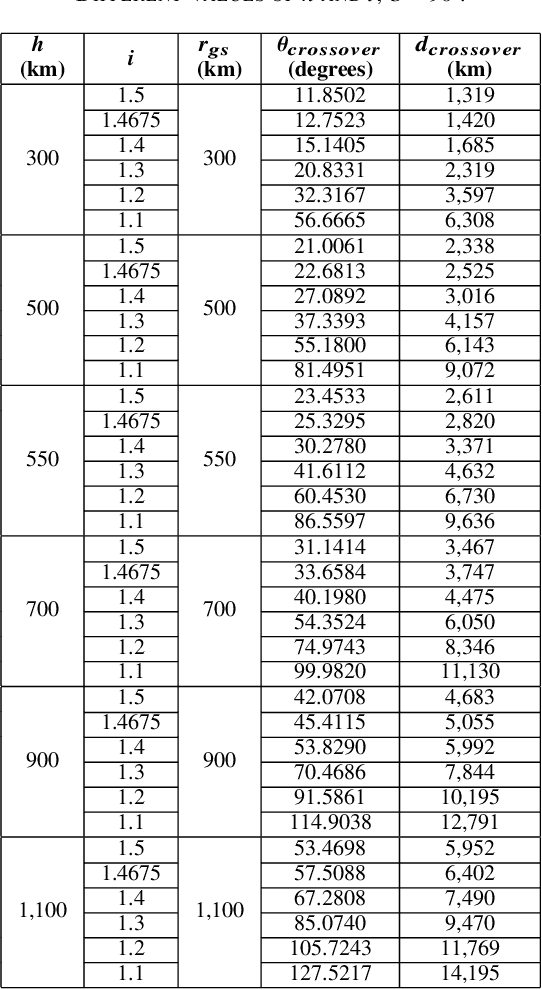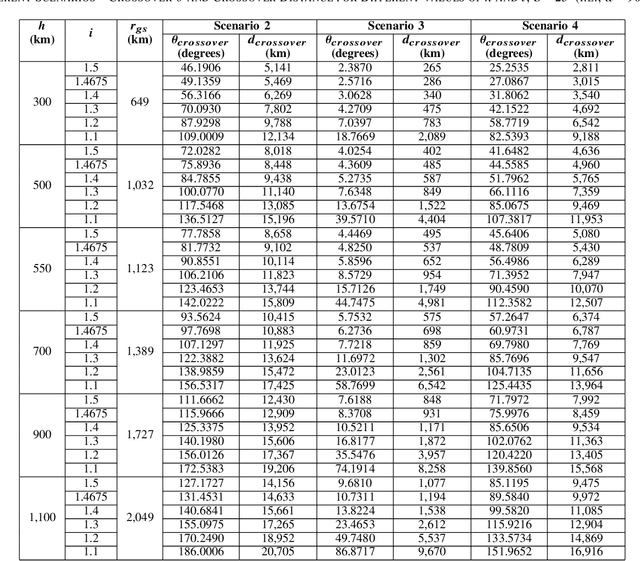When to Crossover from Earth to Space for Lower Latency Data Communications?
Paper and Code
Mar 01, 2022



For data communications over long distances, optical wireless satellite networks (OWSNs) can offer lower latency than optical fiber terrestrial networks (OFTNs). However, when is it beneficial to switch or crossover from an OFTN to an OWSN for lower latency data communications? In this work, we introduce a crossover function that enables to find the crossover distance, i.e., a distance between two points on the surface of the Earth beyond which switching or crossing over from an OFTN to an OWSN for data communications between these points is useful in terms of latency. Numerical results reveal that a higher refractive index of optical fiber (or $i$) in an OFTN and a lower altitude of satellites (or $h$) in an OWSN result in a shorter crossover distance. To account for the variation in the end-to-end propagation distance that occurs over the OWSN, we examine the crossover function in four different scenarios. Numerical results indicate that the crossover distance varies with the end-to-end propagation distance over an OWSN and is different for different scenarios. We calculate the average crossover distance over all scenarios for different $h$ and $i$ and use it to evaluate the simulation results. Furthermore, for a comparative analysis of OFTNs and OWSNs in terms of latency, we study three different OFTNs having different refractive indices and three different OWSNs having different satellite altitudes in three different scenarios for long-distance inter-continental data communications, including connections between New York and Dublin, Sao Paulo and London, and Toronto and Sydney.
 Add to Chrome
Add to Chrome Add to Firefox
Add to Firefox Add to Edge
Add to Edge